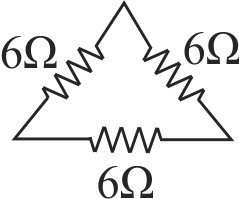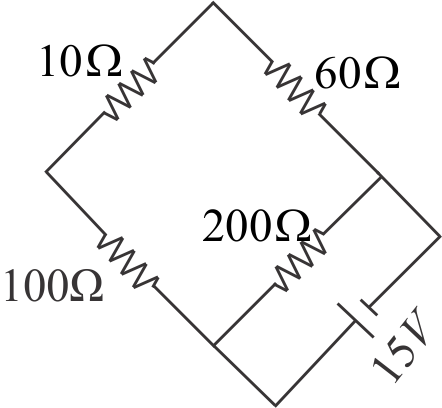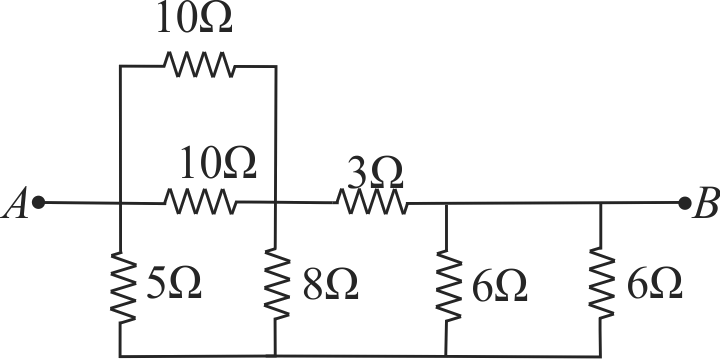356955 Four resistances of \(10\, \Omega, 60\, \Omega, 100\, \Omega\) and \(200\, \Omega\) respectively taken in order are used to form a Wheatstone's bridge. \(A\) \(15\;V\) battery is connected to the ends of a \(200\, \Omega\) resistance, the current through it will be
356955 Four resistances of \(10\, \Omega, 60\, \Omega, 100\, \Omega\) and \(200\, \Omega\) respectively taken in order are used to form a Wheatstone's bridge. \(A\) \(15\;V\) battery is connected to the ends of a \(200\, \Omega\) resistance, the current through it will be
356955 Four resistances of \(10\, \Omega, 60\, \Omega, 100\, \Omega\) and \(200\, \Omega\) respectively taken in order are used to form a Wheatstone's bridge. \(A\) \(15\;V\) battery is connected to the ends of a \(200\, \Omega\) resistance, the current through it will be
356955 Four resistances of \(10\, \Omega, 60\, \Omega, 100\, \Omega\) and \(200\, \Omega\) respectively taken in order are used to form a Wheatstone's bridge. \(A\) \(15\;V\) battery is connected to the ends of a \(200\, \Omega\) resistance, the current through it will be






